Recipes
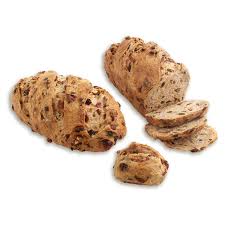
Cramberry Vegetable Bread
Mix first part water flour Mix the cramberry witgrated carrot, chive and onion Make the dough with second part of flour, sugar, milk powder, sel, firt part of dough, milk, water,and yeast Mix 3 minute at 1st speed and 5mn at 2nd speed Add the butter, all the fruit and vegetable and grated cheese, finish mixing to conbine all ingredients Rest the dough on plastic container 50mn for fermentation Cut 150 gr dough and shape and rest 20 mn Puch back the dough roll to shape final bread Rest 40mn for the second fermentation Add some water on top the bread and spray sone grated cheese before inserting to oven at 210 Add the steam and down the temperaturew to 190-200 for 30-35 mn Remove the breat and transfer to a rack to cool down
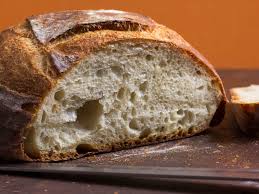
Country Style Bread
Mix all the flours and water and mix just until they are combined. Let stand for 30 minutes (autolysis). Add starter and salt. Mix on low speed 5-8 minutes to develop the dough. Fermentation Ferment at 24 ° C until almost double in bulk, about 8 hours. weigh 900 g. shape into round loaves. Proof to almost double in bulk, about 3-4 hours. Cooking 220 ° C with steam, 40-45 minutes
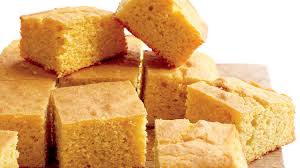
Corn Bread
Add the cornmeal to the mixing bowl and pour the dough water over it. Allow it to soak for about 15 minutes. This will begin softening the cornmeal, and mixing and handling quality will improve. Add the remaining ingredients to the mixing bowl, including the poolish. In a spiral mixer, mix on first speed for 3 minutes in order to incorporate the ingredients. The absorption of the cornmeal can vary considerably (particularly with medium or coarse cornmeal), so it is important to check the dough carefully while it is on first speed and make corrections as necessary. The dough should be of medium consistency once the ingredients are incorporated. Turn the mixer to second speed and mix for 3 to 3 1⁄2 minutes. Cornmeal tends to have a puncturing effect on gluten nevertheless, mix until there. is a moderate gluten development. Desired dough temperature: 24℃ Bulk fermentation: 11⁄2 hours. folding: Fold the dough after 45 minutes of bulk fermentation. dividing and shaping: Divide the dough into 350-600gr (or make rolls with smaller pieces). Preshape lightly into rounds and place on a lightly floured work surface, seams up. Cover the rounds with plastic. When the dough has relaxed sufficiently (10 to 20 minutes), shape it into tight round or oval loaves. Place the loaves into floured bannetons or onto lightly floured baker’s linen and cover with plastic. final fermentation: Approximately 1 to 11⁄4 hours at 24℃ Baking: Invert the risen loaves onto the loading conveyor or peel. Score the loaves as desired. Presteam the oven, load the bread, and steam again. Bake in a 230℃ oven. Open the oven vents after the loaves show color, in order to finish the bake in a drying oven. Loaves scaled 900gr will bake in approximately 40 minutes.
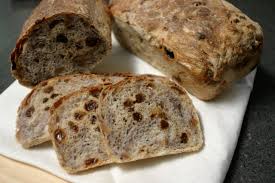
Ciabatta Walnut Raisin
Add all the ingredients to the bowl except the walnuts and raisins. In a spiral mixer, mix on first speed for 3 minutes in order to incorporate the ingredients. If necessary, correct the hydration by adding water or flour in small amounts. Finish mixing on second speed for 4 to 5 minutes, to moderate gluten development. Add the walnuts and raisins to the dough. Mix on first speed only until they are evenly incorporated. This dough can also be mxed using the bassinage technique Desired dough temperature: 24℃ bulk fermentation: 2 hours. folding: Fold the dough halfway through the bulk fermentation. dividing and shaping: Flour the work surface copiously. Invert the dough onto the work surface and gently pat out the larger air bubbles but remember that for the most part the fermentation gases and the associated interior air holes and pockets in the dough should remain intact. Lightly flour the top surface of the dough. Have ready a sufficient number of bread boards that are thoroughly (but not too thickly) covered with sifted bread flour. Cut a narrow strip, about 10cm wide, down the length of the dough. Then cut the strip into rectangles, each weighing 18 ounces. If the dough is too light, place the additional bits of dough needed to correct the weight onto the top of each dough piece. Place the dough pieces on the floured bread boards, with the scrap on top. If they are more square than rectangular, give a gentle stretch, but be careful not to tear the dough. When all the dough has been scaled, cover the boards with baker’s linen and then plastic (or place in a covered speed rack). final fermenTaTion: About 11⁄2 hours at 24℃ baking: With normal steam, 250℃ for 34 to 38 minutes for a loaf weighing 450gr. If the ciabatta is taking on too much color in the oven too soon due to the raisins, lower the oven temperature by 250℃
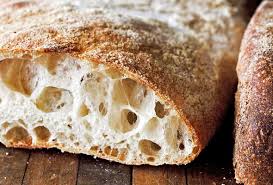
Ciabatta
Heat the water to about 37°C. Dissolve the yeast in warm water. Add the yeast mixture to the flour for the sponge. Add the oil. Mix to form a soft dough. Beat well for about 5 minutes or until the sponge begins to turn smooth. Cover and leave at room temperature until doubling in size, about 1 hour. Stir and add the ingredients for the dough. Beat for a few minutes to form a smooth paste, which will be very soft and sticky. Fermentation Cover and let ferment at room temperature until doubled in size, about 1 hour. Makeup and cooking Mold with light oil Handle the fermented dough as little as possible, ladle into portions weighing about 550 g. This is usually done by approximation to avoid having to handle the dough. Place the dough on a greased and floured baking sheet. Shape very lightly in rough ovals or rectangles on oiled pans. The dough will be very sticky; handle as little as possible. Sprinkle with additional flour. Proof at room temperature until the dough doubles in volume and the flour begins to crack slightly. Bake at 220 ° C for about 30 minutes, until golden brown. Cool on a grid.
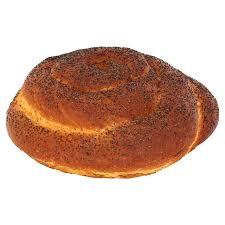
Cholla Bread
combine the yeast and water in the bowl of a stand mixer and stir with a fork until completely dissolved. Add the flour, sugar, eggs and olive oil. With the dough hook, mix on a low speed for 5 minutes to combine. Add the salt ” “speed for 5 minutes to combine. Add the salt and increase the speed to medium for a further 8 minutes. Remove the bowl from the mixer and cover it with a clean, damp tea towel. Leave the dough to rise, well away from any draughts, until it has doubled in size about 1½–2 hours. Turn the dough out onto a lightly floured surface. Use your hands to punch the air out of it and divide it into thirds. Take each piece in turn, and roll it back and forth to stretch it into a long thin roll about 50cm long. Now you’re ready to braid. Take your three logs and press them together at the end furthest away from you, with the central strand pointing directly towards you and the other two roughly at 90° from each other. Cross the right strand over the central one, laying it gently in the space between the central log and the left strand. What was on the right is now in the centre. Lift the left strand over the central log, placing it in the space between the central and right logs. Repeat until the braid is complete. Line a baking sheet with baking paper and carefully transfer the cholla onto it. Slip the whole thing into a large plastic bag. Inflate the bag so that the dough doesn’t come into contact with the plastic. Leave to prove again for 1½–2 hours, depending on the temperature of your kitchen. The loaf should be visibly larger, though not doubled in size. Meanwhile, preheat the oven to 200°C/gas mark 6. Lightly brush the top of the loaf with egg wash, making sure it goes into every fold and crevice. Sprinkle the seeds on top and place in the centre of the oven. Immediately reduce the heat to 180°C/gas mark 4 and bake for 40–45 minutes. Halfway through baking, rotate the baking sheet from front to back to ensure an even bake. The finished cholla should be a glossy, chestnut brown. Cool on the tray for 10–15 minutes before transferring to a wire rack to cool completely. VARIATIONS: Use brown sugar or honey in place of the sugar for a more mellow, caramel flavour.
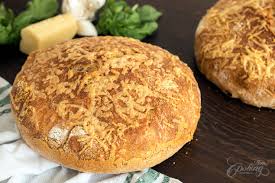
Cheese Bread
mixing: Add all the ingredients to the mixing bowl, with the exception of the cheese. In a spiral mixer, mix on first speed for 3 minutes, adjusting the hydration as necessary. The dough should be slightly on the stiff side at this point. Once the cheese is incorporated, it will have a looser feel. Mix on second speed for approximately 3 minutes more, to a moderate gluten development. Add the cheese and mix on first speed just until evenly incorporated. Avoid overmixing. Desired dough temperature: 24℃ bulk fermenttation: 2 1⁄2 hours. folding: Fold once after 1 1⁄4 hours or, if the dough seems to need more strength, fold twice at 50- minute intervals. dividing and shaping: Divide the dough into 1.5-pound pieces; shape round or oval. final fermentation: 1 to 11⁄2 hours at 24℃. Alternatively, retard the dough for up to 8 hours at 6℃, or up to 18 hours at 4-5℃ baking: With normal steam, 250℃ for 40 to 45 minutes. Lower the oven temperature to 220℃ after 15 minutes to avoid excess darkening due to the cheese.
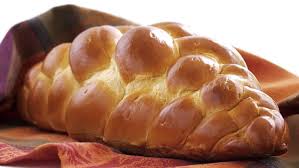
Challah Bread
straight dough method: Soften the yeast in a little of the water. Fresh yeast: Mix with about 2 times its weight in water, or more. Ideal water temperature: 38°C. Active dry yeast: Mix with about 4 times its weight in water. Ideal water temperature: 40°C. Combine the remaining ingredients, including the rest of the water, in the mixing bowl. Add the dissolved yeast, taking care not to let it come in contact with the salt. Mix to a smooth, developed dough.
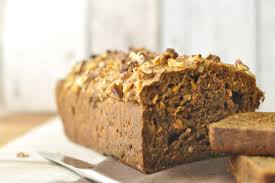
Carrot & Walnut Bread
mixing: Squeeze as much moisture as possible from the carrots and discard or drink. Add all the ingredients to the mixer except the carrots and wal-nuts. In a spiral mixer, mix on first speed for 3 minutes in order to incorporate the ingredients. If neces-sary, correct the hydration by adding water or flour in small amounts. Finish mixing on second speed for 3 minutes, to moderate gluten development. Add the carrots and walnuts to the dough. Mix on first speed only until they are evenly incorporated. Desired dough temperature: 24℃ bulk fermentation: 1.5 hours. folding: Fold the dough halfway through the bulk fermentation. dividing and shaping: Divide the dough into 450-900gr (or larger, as desired); shape round or oval, or make into pan loaves. final fermentation about 1 hour at 24℃ baking: With normal steam, 250℃ for 15 minutes, then lower the temperature to 220℃ to finish the bake. Loaves scaled at 900gr should bake for 35 to 38 minutes.
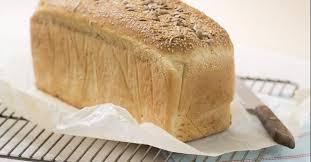
Buttermilk bread
Place all the ingredients except the pâte fermentée in a spiral mixer. Mix on first speed for 3 minutes in order to incorporate the ingredients. As the dough is coming together, add the pâte fermentée in chunks. Depending upon the absorption of the whole-wheat flour, you may need to correct the hydration by adding water or buttermilk. Finish mixing on second speed for 3 minutes. The dough should have good body and supple strength at this point. Mix 30 to 60 seconds longer if the dough seems to lack adequate strength. Desired dough temperature: 24℃ Bulk fermentation: 2 hours. folding: Fold the dough after 1 hour of bulk fermentation. dividing and shaping: Divide the dough into 450-900gr pieces (or larger, as desired). Preshape into rounds. When sufficiently relaxed, shape into round or oval loaves. Place them either into floured bannetons or between folds of floured baker’s linen, and cover with plastic. The bread can also be baked in loaf pans or shaped into rolls. final fermentation: About 1 hour at 24℃ Baking: Place the risen loaves on the loading conveyor or peel. Slash as desired. Presteam the oven, load the bread, and steam again. Bake in a 220℃ oven, opening the vents once the bread shows color, in order to finish the bake in a drying oven. Round loaves scaled at 450-900gr will bake in approximately 38 minutes. The buttermilk contributes color to the bread, so if the loaves are darkening too quickly, lower the oven temperature by 220℃
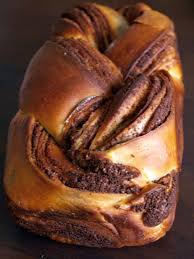
Brioche Tressé Chocolate
Cut the chocolate into pieces in a container. Boil Light Cream Crème Elle & Vire and pour over chocolate. Whisk until chocolate is dissolved. Cool and reserve in a cool place Mix the yeast with the warm milk, add the sugar. Place the flour and salt in a bowl, make a well, add the previous preparation and mix. Stir in the beaten eggs. Knead for 2 minutes. Add the Elle & Vire Sweet Condé-sur-Vire Butter cut into pieces. Knead until the butter is well incorporated. Put the mixture in a bowl, cover with a cloth and let stand. The brioche has to double in size. Assembly: Preheat the oven to 160°C. Spread the dough in a rectangle on a floured work surface. Cover with the cold chocolate cream. Sprinkle the surface with cranberry pieces. Roll out the mixture and let stand for 30 minutes in a cool place. When you leave the refrigerator, cut it in half lengthwise. Braid the two parts and form a crown. Place on a plate and let stand 15 minutes. Brush the crown with melted butter. Sprinkle with powdered sugar. Cook 25 minutes.
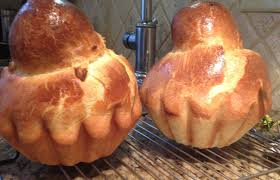
Brioche Traditional
Pour into the mix the flours, salt, sugar, and orange blossom. Add the yeast dissolved in the cold milk. Knead in the first speed, adding the eggs little by little for 3 minutes, then knead in 2nd speed for 7 minutes. add the butter and and mix for 10 more minute until the dough becaume elastic and separed from the bowl. keep the dough out for 2-3 hour and let it proof. pouch down and place in chiller. keep 24 hour in chiller.
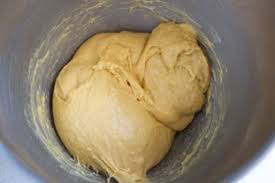
Brioche Dough
Make the sponge: To the bowl of a stand mixer fitted with the hook attachment, add 1 cup flour, yeast, and milk. Using a spatula, mix until well combined, then cover with plastic wrap and let sit for 45 minutes. Once the sponge has formed some air pockets, add in eggs, remaining 3 cups flour, sugar, and salt. Mix on medium speed until well combined, then gradually increase to medium-high speed and continue mixing until dough pulls away from the sides of the bowl and becomes shiny and elastic, scraping down bowl every 4 to 5 minutes, 10 to 13 minutes. With the mixer running, add in butter gradually, 1 tablespoon at a time, letting each tablespoon fully incorporate into the dough before adding the next, 13 to 15 minutes. Continue mixing on medium-high speed for 5 to 7 minutes until the dough passes the windowpane test. Cover bowl with plastic wrap and let rest about 1 hour or doubled in size. To bake next day: Once dough has doubled in size, punch down to deflate dough completely, then re-cover with plastic wrap. Refrigerate overnight until you are ready to bake the next day. Follow instructions in the next step, letting dough proof until doubled before baking, longer if needed, up to 2 hours 30 minutes. To bake same day: Once dough has doubled in size, turn out onto a floured surface and punch down dough. Divide in half using a bench scraper. Cut each half into six equal pieces. Flatten each piece into a rectangle, then fold short ends in towards each other as if folding a letter. Flatten again and tightly roll into a log starting with the short end. Repeat with all pieces. Grease 8”-x-5” loaf pans with butter. Place 6 pieces of dough seam-side down in one straight row into each prepared pan. Cover with plastic wrap. Preheat oven to 170 ºC. Let dough proof until puffy and doubled in size, 1 hour to 1 hour 30 minutes. In a small bowl, whisk together remaining egg and water. Brush egg wash on top of loaf and sprinkle lightly with salt. Let cool 5 minutes then turn loaves out onto a cooling rack. Let cool completely.
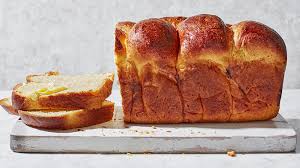
Brioche Classic
Sponge method Scald milk and get little warm. Dissolve yeast. Add flour and mix to make a sponge. Let rise until double. Gradually mix in eggs and then dry ingredients to make a soft dough. Beat in butter a little at a time until it is completely absorbed and the dough is smooth. Dough will be very soft and sticky. Fermentation If the dough will require much handling in makeup, as for small brioche rolls, it is easiest to retard the dough overnight. Making it up while chilled reduces stickiness. If the dough is to be simply deposited in pans, its stickiness and softness is not a problem, so it need not be retarded. Ferment 20 minutes, then scale and pan. Makeup Egg wash after proofing. Baking: 200°C for small rolls 190°C for large units
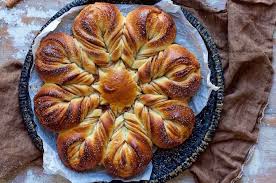
Brioche Almond & Spice
Mix the yeast with the warmed milk, add the sugar. Place the flour and the salt in a bowl, make a well, add the previous preparation and mix. Stir in the whipped eggs. Knead and lift the dough for 2 minutes. Add the butter and mix again. Peel off the dough from the edge of the bowl, add 10g of flour and knead the dough 2 minutes vigorously. a bowl, mix butter, cinnamon, nutmeg, sugar and half of the lemon zest. Spread the brioche dough on a floured surface spreading from the previous mixture. Sprinkle with raisins and roll the dough. Arrange in a buttered cake tin. Cover and cook the dough in a warm, dry place for 1 hour. bake at 170℃ for 35mn
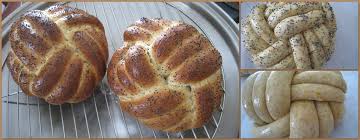
Bernebrot Bread
mixing: Place all the ingredients in the mixing bowl. In a spiral mixer, mix on first speed for 3 minutes until all the ingredients are thoroughly incorporated, then on second speed for 4 or 5 minutes more. The goal is to develop a strong gluten network. The dough will be comparatively stiff, although slightly looser than challah dough. The desired dough temperature is 23-35Cº. Bulk fermentation: 2 hours. folding: Fold the dough once, after 1 hour of fermentation. dividing and Shaping: Divide the dough into appropriate-sized pieces. Preshape round or into blunt cylinders and let rest on an unfloured work surface, covered with plastic. When relaxed enough to be elongated without tearing, usually 10 to 15 minutes, roll out the strands and form the braids. Once braided, proof the loaves, covered with baker’s linen and a sheet of plastic to prevent the formation of a skin. If using a proof box with humidity, set the controls low enough to prevent excess humidity from causing the individual strands to merge together. fInal fermentation: 1 1⁄2 to 2 hours at about 24℃ Baking: Before baking, thoroughly egg wash the surface of the Berne Brot. If desired, sprinkle poppy or sesame seeds on top. Bake without steam at 190℃. Baking time is determined by the size of the loaves. A braid weighing 450gr should bake in about 30 to 35 minutes. If the oven has vents, they should remain open throughout the bake.
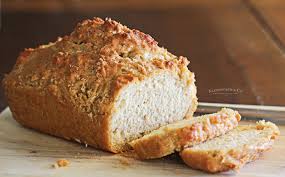
Beer Bread
miXing: Add all the ingredients to the mixing bowl. Mix just until the ingredients come together and the flour is hydrated. Turn off the mixer, cover the dough, and let it rest undisturbed for 20 minutes (since the yeast and salt are added at the outset, we can call this mixing method a modified autolyse technique). Turn the mixer on first speed and give the dough one or two turns in the bowl. Turn off the mixer and cover the dough. After 20 minutes give a second folding of the dough. Twenty minutes later, mix on second speed for 2 to 2 1⁄2 minutes, to moderate gluten development. Desired dough temperature: 24℃ Bulk fermentation: 2 further hours, with a light fold after 1 hour. dividing and shaPing: Divide the dough into 450-900gr shape round. The proofing baskets can be dusted with whole-rye flour for a more rustic appearance to the final loaves. final fermentation: 1 1⁄4 to 1 1⁄2 hours at 24℃ BaKing: With normal steam, 250℃ for 15 minutes, then lower the oven temperature to 220℃ bake for an additional 25 to 30 minutes for a 750gr loaf, 30 to 40 minutes for a loaf scaled at 900gr. A full bake brings out the deepest fragrances and flavors.
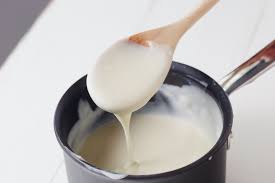
Bechamel
Melt the butter in a heavy-bottomed saucepan. Stir in the flour and cook, stirring constantly, until the paste cooks and bubbles a bit, Add the hot milk, continuing to stir as the sauce thickens. Bring it to a boil. Add salt, pepper and nutmeg powderto taste, lower the heat, and cook, stirring for 2 to 3 minutes more. Remove from the heat. To cool this sauce for later use, cover it with wax paper or pour a film of milk over it to prevent a skin from forming. add schredded cheese
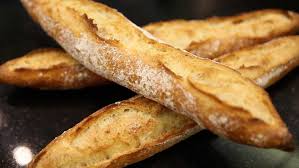
Baguette Tradition
MIXING: Place all the ingredients in the mixing bowl. Mix for 700 to 800 revolutions of the dough hook, on first speed only. The dough will be underdeveloped at this point. Leave the dough in the mixing bowl. Desired dough temperature: 24℃ BulK fermentatIon: 1 hour. foldIng: Fold the dough 3 times, at 20-minute intervals, by turning on the mixer for several seconds. Once the third fold is performed, the dough will be supple and reasonably strong. dIividing: Depending upon the number of ba- guettes required, divide the dough into the appropri-ate weight and place into buckets For instance, to process 20 baguettes per bucket, dough weight is 7kg for 350gr baguettes. Cover the buck- ets and place into a 5-6℃ cooler. They can remain at this temperature for up to 18 hours. Shaping: Remove the buckets from the cooler and divide into 350gr pieces. Preshape, and when relaxed, shape to baguettes. Place with seams up on lightly floured couche linen. Cover to prevent the formation of a crust. fInal fermentation: 11⁄2 to 2 hours at 24℃ Baking: With normal steam, 250℃. Bake this bread until it achieves a full rich crust color. A full bake is recommended to ensure a crisp crust.
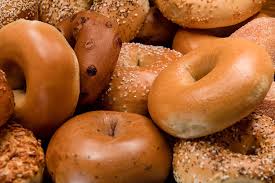
Bagel
water mixture for bath: 2 liter water and corn syrup mixing Place the bread flour, high-gluten flour, water, instant yeast, salt, and diastatic malt into the bowl of a stand mixer and mix on low speed for approximately 4 minutes. After the ingredients have been incorporated, increase the mixing speed to medium and mix for an additional 2 to 4 minutes. (If the machine is straining, a couple of squirts of water from a spray bottle into the bowl can help.) Fermentation The bagel formula is unique in that the dough does not go through a proper bulk fermentation cycle. Instead the dough is divided immediately after being mixed, shaped, and then allowed to ferment overnight in the refrigerator. Stretch and Folds/Degassing Due to the tightness and stiffness of this dough, it does not benefit from a stretch-and-fold cycle. Dividing Place the dough on a nonfloured surface and cover with a plastic bag so the dough does not dry out. Using a scale and dough divider or scraper, divide into 110gr portions. To preven drying, cover the bulk portion with plastic wrap as you divide.
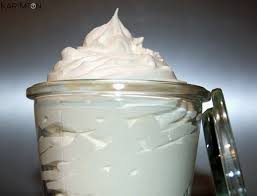
Whipped Cream Mascarpone Vanilla
In a bowl with whip, whip the cream, macarpone, icing sugar and vanilla
